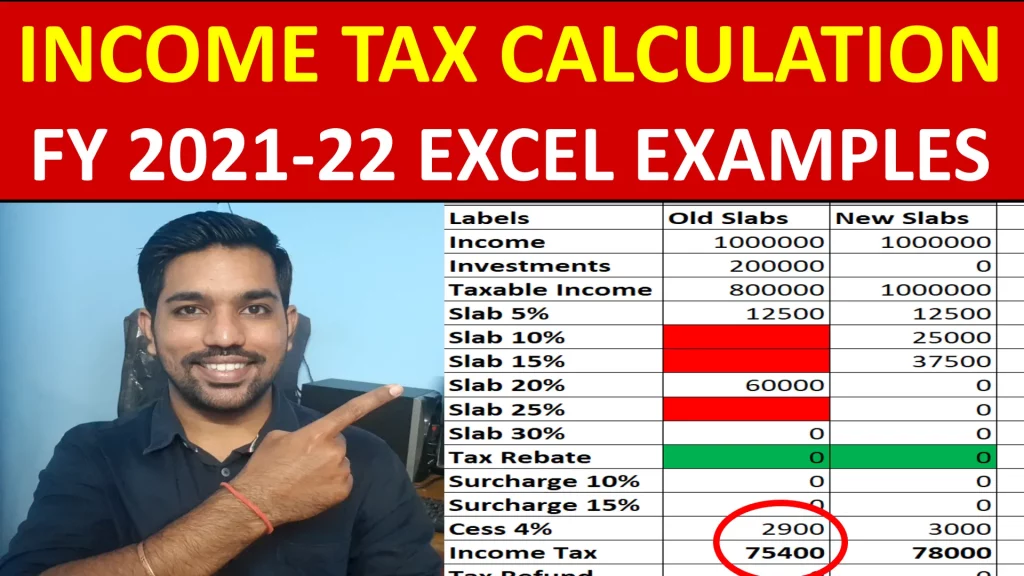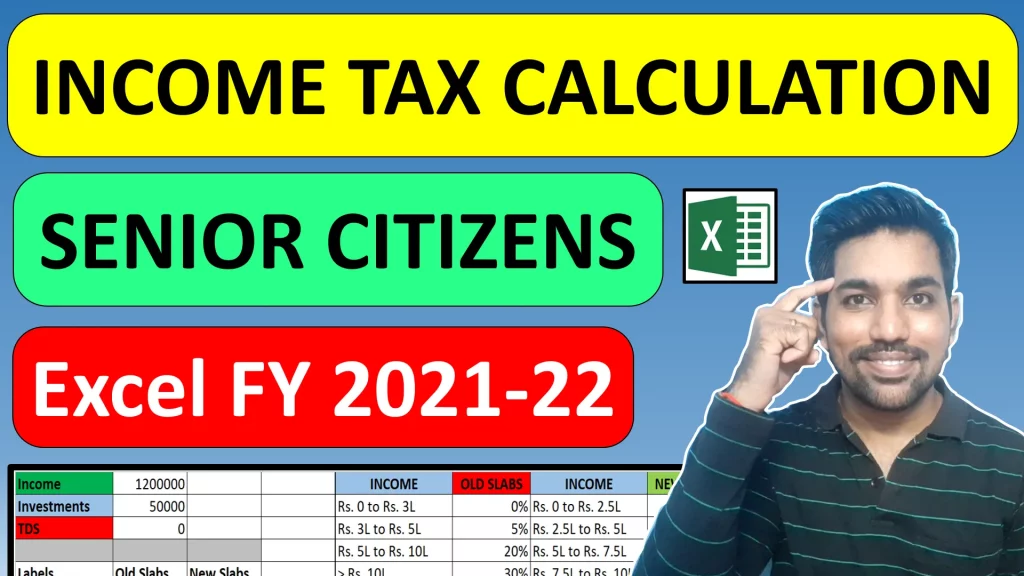One of the most asked question on my YouTube channel is how to calculate income tax on salary in excel and how to calculate taxable income when someone is a salaried employee? It is very important to understand various factors while calculating taxable income which will help us to calculate income tax. Many other queries will be solved in this article – how to calculate income tax for salaried employee in excel, investment options available to save income tax, can you opt for new tax regime in next financial year, etc.
For salaried employees, we first calculate taxable income by segregating the various deductions such as EPF (Employee provident fund), NPS contribution from employer, HRA deduction and other investment options used by us from our income, in case we are opting for old tax regime. If we are opting for new tax regime, we won’t be able to claim deductions to save income tax so our entire gross income becomes our taxable income.
We will also see whether we should choose Old Tax regime or New Tax regime in case of salaried employee and which one will be beneficial.
Download Income Tax Excel 2024-25 Calculator
Please click below button to DOWNLOAD Income Tax Calculator in Excel:
Check out More online Calculators here including Income Tax, PPF, SIP, Home Loan Calculator and many more..
Watch below video to know how to calculate income tax on salary payslip with examples
How to Calculate Income Tax on Salary Video

Above video helps you to understand every point you should know while calculating your income tax if you are salaried. We have taken a payslip example to understand the process of calculating income tax and what are the different considerations while doing so.

Old Tax Regime vs New Tax Regime
Let us first start with knowing the various Tax Slabs for Old Tax regime and New Tax regime.
Tax Slab Rates for people below 60 years:
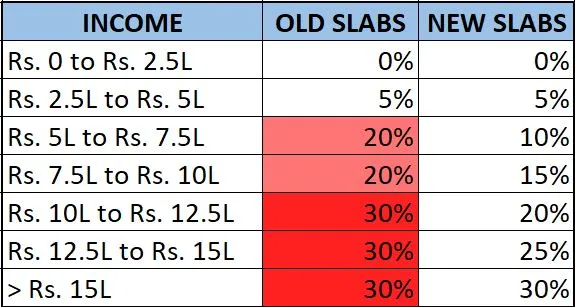
As seen above, for FY 2024-25, there are 2 slab rates based on Old and New Tax Regime.
Old tax rates are greater compared to New Tax rates. But with New tax rates, you won’t be able to claim any deductions available to reduce your taxable income if you want to save income tax.
Further, New Tax rates have 7 slabs under it based on the income bracket you belong to, whereas, old tax rates have 4 slabs based on your income bracket.
In case you are calculating your income tax for the first time, let’s understand how these tax rates work. Let’s say your income is Rs. 11 Lakh in FY 2024-25. This does not mean you pay 30% on entire Rs. 11 Lacs of your income. Assuming that we are not considering any deductions in this case apart from Standard Deduction = Rs. 50,000 and your gross income is Rs. 11 Lakh:
Old Tax Regime
(with Standard deduction = Rs. 50,000, Taxable Income = Rs. 10.5 Lakh)
- You won’t pay any tax on income up to Rs. 2.5 Lacs
- Between Rs. 2.5 Lacs to Rs. 5 Lacs, 5% Tax is applicable = Rs. 12,500 (5% on Rs. 2.5 Lacs difference)
- Between Rs. 5 Lacs to Rs. 10 Lacs, 20% Tax is applicable = Rs. 1,00,000 (20% on Rs. 5 Lacs difference)
- Between Rs. 10 Lacs to Rs. 10.5 Lacs, 30% Tax is applicable = Rs. 15,000 (30% on Rs. 50,000 difference)
- After adding above taxes = Rs. 1,27,500, 4% cess is applicable which is Rs. 5100
- You total income tax = Rs. 1,32,600 considering taxable income of Rs. 10.5 Lacs after deducting standard deduction = Rs. 50,000
New Tax Regime
(with Standard Deduction = Rs. 75,000, Taxable Income = Rs. 10.25 Lacs)
- In this case your taxable income = Rs. 10.25 Lacs
- Standard deduction will be applicable in new tax regime for FY 2024-25
- You won’t pay any tax on income up to Rs. 3 Lacs
- Between Rs. 3 Lacs to Rs. 7 Lacs, 5% Tax is applicable = Rs. 20,000 (5% on Rs. 4 Lacs difference)
- Between Rs. 7 Lacs to Rs. 10 Lacs, 10% Tax is applicable = Rs. 30,000 (10% on Rs. 3 Lacs difference)
- Between Rs. 10 Lacs to Rs. 10.25 Lacs, 15% Tax is applicable = Rs. 3,750 (15% on Rs. 25,000 difference)
- After adding above taxes = Rs. 53,750, 4% cess is applicable which is Rs. 2150
- You total income tax = Rs. 55,900 considering taxable income of Rs. 10.25 Lacs
As seen above, you pay high income tax with income = Rs. 11 Lacs and if you opt for Old Tax Regime. This is because we have not considered any investment options for deductions to save our income tax. How much income tax can be saved with Old Tax Regime depends on the investments we can make. Read more about Tax Saving Options with Old Tax Regime.
Below is the screenshot of above calculations in Excel:
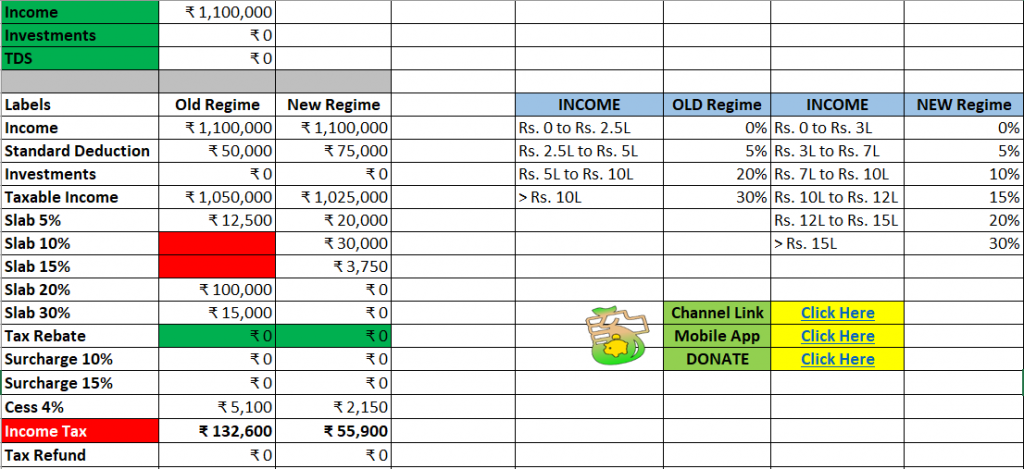
Note: Under investments, we have mentioned Rs. 50,000 as standard deduction. This amount is applicable in Old Tax Regime and and Rs. 75,000 standard deduction is available in New Tax Regime for FY 2024-25.
Love Reading Books? Here are some of the Best Books you can Read: (WITH LINKS)
How to calculate Taxable Income
Since now you have understood how income tax calculation works in both Tax regime, it is now time to understand how to calculate taxable income.
For Old Tax regime, as we saw above, the entire income you earn is not taxable, since you are allowed to make required investments to be claimed so that you can save income tax. These investment options can be claimed only in old tax regime and not in new tax regime.
Now what are these deductions? Below are some of them:
- EPF – Every month, EPF (Employee Provident Fund) amount is deducted from salary. This amount can be claimed under section 80C and appropriate amount can be deducted from our total income to reach taxable income
- NPS – In case your employer contributes in NPS on your behalf, you can claim this under Section 80CCD to reach your taxable income
- Section 80C – This includes various options including Life insurance, 5 year fixed deposits, ELSS (Equity linked saving scheme), Home loan EMI payments, PPF (Public Provident Fund), etc.
- HRA – House Rent Allowance. If you notice your payslip is having an entry of HRA allowance. This is the allowance you get to pay for rented accommodation you stay in. So if you actually stay on rent, you can claim this HRA allowance to reduce taxable income so that your income tax is saved!
So these are some of the deduction options available to save income tax. Watch below video to know more:

Example Salary – Rs. 5 Lacs
Let us now understand how Old and New Tax regime calculates income tax on various income starting from Rs. 5 Lacs in a financial year. Below are the numbers in action with standard deduction applied in investments:

As seen above, you get tax rebate under section 87A, that cancels the income tax and makes your effective income tax = Rs. 0 in both old and new tax regime.
Note: Tax Rebate 87A is applicable when your taxable income is less than or equal to Rs. 5 Lacs. with Old Tax regime and less than Rs. 7 lacs with new tax regime.
Example Salary – Rs. 10 Lacs
Below is the screenshot if income – Rs. 10 Lacs with standard deduction applied in investments:
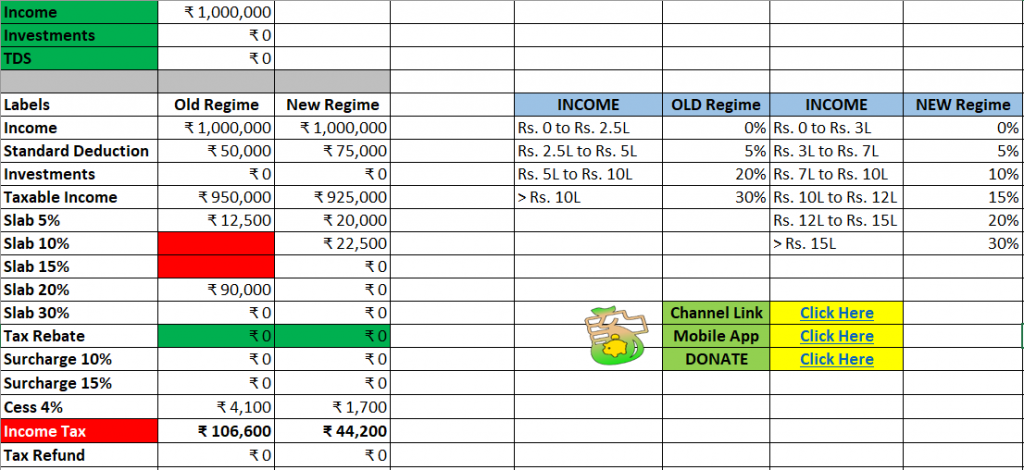
As seen above, you pay less income tax with New Tax regime. Here we have not considered any other deductions apart from standard deduction.
But what if we consider Rs. 1.5 Lacs deduction under section 80C, Rs. 50,000 under section 80CCD(1B) in NPS and Rs. 1 Lakh as HRA (House Rent Allowance), which makes total investments = Rs. 3.5 Lacs with standard deduction? Let’ see how the stats looks like:
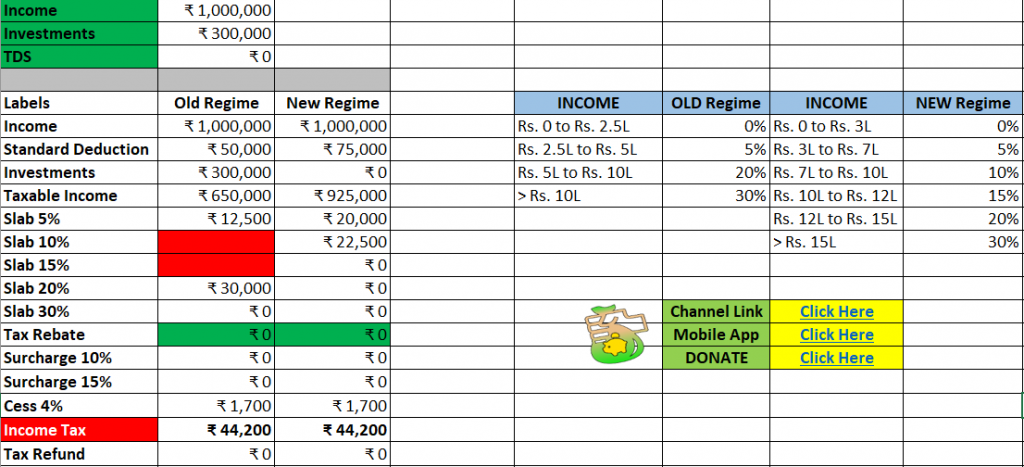
As seen above, after making required investments, we pay same income tax with old tax regime and new tax regime. This proves that it is very important to check if after making investments, how much tax we will be paying with Old or New Tax regime. You can make more investments to save income tax under old tax regime
ALSO READ: Mutual Funds Return Calculator using Excel
Choose between Old or New Tax Regime
The most important question is whether to choose Old Tax regime or New Tax regime while calculating income tax?
The simple answer is to use the excel calculator I have provided in order to check income tax using Old and New regime based on your estimated yearly income and investments you are planning to make. This will help you to know which tax regime will help you to pay less income tax. You can also use this instant income tax calculator I have made for you to check your income tax
Conclusion
As seen in examples and videos above, it is very important to analyze your income tax based on old or new tax regime if you are a salaried employee. Based on your yearly income and investments, you can reach an estimate of income tax and choose whether you should opt for old tax regime or new tax regime.
Up to a certain limit, old tax regime is beneficial if you are making investments to save income tax. And after this cut off limit, new tax regime will be beneficial since it has reduced tax slab rates. It entirely depends on each individual’s income and investments that they make to choose between Old or new tax regime.
Some more Videos



Some more Reading:
- PPF – Public Provident Fund Excel Calculator
- SSY – Sukanya Samriddhi Yojana Excel Calculator
- 20 Years SIP calculator using Excel
Save Home Loan Interest Amount!
Use Home Loan Excel Calculator that will help you to Save Interest Amount on Home Loan EMI.
Click below button to download Home Loan EMI and Prepayment Calculator in Excel:
Watch how Home Loan Calculator in Excel Works
Income Tax Calculator App – FinCalC
For Income Tax Calculation on your mobile device, you can Download my Android App “FinCalC” which I have developed for you to make your income tax calculation easy.
What you can do with this mobile App?
- Calculate Income Tax for new FY 2024-25 and previous FY 2023-24
- Enter estimated Investments to check income tax with Old and New Tax Regime
- Save income tax details and track regularly
- Know how much to invest more to save income tax
- More calculators including PPF, SIP returns, Savings account interest and lot more
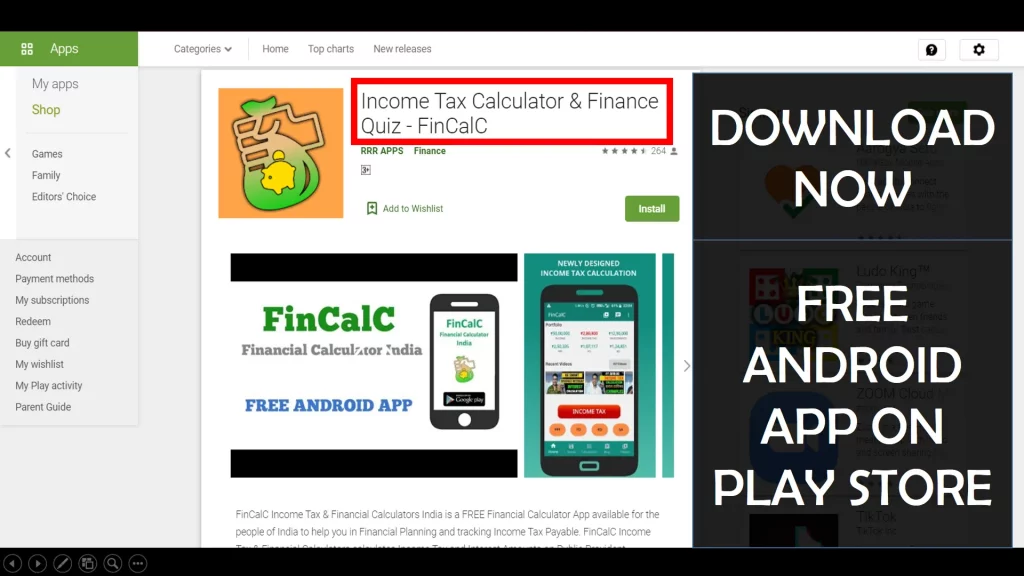
Use Popular Calculators:
- Income Tax Calculator
- Home Loan EMI Calculator
- SIP Calculator
- PPF Calculator
- HRA Calculator
- Step up SIP Calculator
- Savings Account Interest Calculator
- Lump sum Calculator
- FD Calculator
- RD Calculator
- Car Loan EMI Calculator
- Bike Loan EMI Calculator
- Sukanya Samriddhi Calculator
- Provident Fund Calculator
- Senior Citizen Savings Calculator
- NSC Calculator
- Monthly Income Scheme Calculator
- Mahila Samman Savings Calculator
- Systematic Withdrawal Calculator
- CAGR Calculator
I’d love to hear from you if you have any queries about Personal Finance and Money Management.
JOIN Telegram Group and stay updated with latest Personal Finance News and Topics.
Download our Free Android App – FinCalC to Calculate Income Tax and Interest on various small Saving Schemes in India including PPF, NSC, SIP and lot more.
Follow the Blog and Subscribe to YouTube Channel to stay updated about Personal Finance and Money Management topics.






